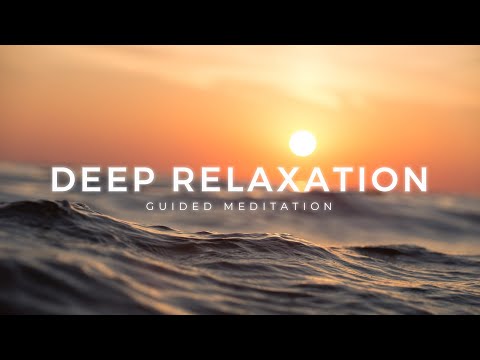You’re standing at the edge of serenity, poised to dive into the tranquil waters of deep breathing. Unlock the door to inner calm with these eight scientifically-backed secrets.
From the belly-expanding diaphragmatic technique to the rhythmic 4-7-8 method, you’ll learn how to harmonize breath and body, visualize peace, and steadily unwind with paced respiration.
By the end, a tailored breathing routine will be your daily anchor, keeping stress at bay and tranquility within reach.
Key Takeaways
- Diaphragmatic breathing maximizes lung capacity and reduces stress.
- The 4-7-8 breathing technique can improve sleep quality and reduce anxiety.
- Coordinated breath and movement enhances relaxation and mindfulness.
- Paced respiration and rhythmic breathing promote relaxation and overall well-being.
Understanding Diaphragmatic Breathing
You’ll find the essence of deep breathing in the technique known as diaphragmatic breathing, which engages the large, dome-shaped muscle at the base of your lungs. This approach maximizes your lung capacity, allowing for a more efficient oxygen-carbon dioxide exchange. When you inhale, your diaphragm contracts and moves downward, creating space for your lungs to expand and fill with air. As you exhale, the diaphragm relaxes and moves upward, helping to expel air from the lungs.
Research shows that diaphragmatic breathing can increase lung capacity and improve breath retention, crucial for maintaining high oxygen saturation levels in your blood. By practicing this type of breathing, you enhance the respiratory system’s ability to sustain prolonged and deeper breaths. This not only oxygenates your body more effectively but can also lead to a state of calmness and reduced stress.
It’s important to practice regularly to train your diaphragm and intercostal muscles, which can lose tone over time, especially if you’ve developed a habit of shallow chest breathing. As your proficiency in diaphragmatic breathing improves, you might be ready to explore more advanced techniques, such as the 4-7-8 breathing method, which involves a specific rhythm in breath control.
The 4-7-8 Breathing Technique
To master the 4-7-8 breathing technique, you’ll begin by sitting comfortably with your back straight and your eyes closed. Initially developed by Dr. Andrew Weil, this practice involves a specific rhythm that promotes relaxation and stress reduction. You’ll inhale quietly through your nose for a count of four, hold your breath for a count of seven, and exhale completely through your mouth, making a whoosh sound, for a count of eight. This cycle is repeated three to four times.
The breath retention phase is critical; holding your breath for seven seconds allows for a substantial buildup of oxygen, which can have a calming effect on your nervous system. Moreover, the elongated exhalation of eight seconds serves to activate your parasympathetic nervous system, further promoting a state of calm.
Evidence suggests that the 4-7-8 technique can improve sleep quality, reduce anxiety, and help manage stress responses. Counting variations may be adapted as you become more practiced, but the original sequence is a solid foundation for beginners.
Now that you understand the basics of the 4-7-8 breathing method, let’s explore how to enhance tranquility further by incorporating coordinated breath and movement into your practice.
Coordinated Breath and Movement
Incorporating movement into your breathing exercises can elevate your sense of tranquility, harmonizing your physical and mental states. Movement meditation, which involves inhalation synchronization with specific motions, serves as a powerful tool for enhancing relaxation and mindfulness.
- Inhalation synchronization: Begin by focusing on syncing your breath with each movement. Inhale deeply as you raise your arms, and exhale as you lower them. This coordination promotes a deeper connection between your body and mind.
- Gradual progression: Start with simple movements, such as arm raises, before progressing to more complex sequences. This allows your body to become accustomed to the rhythm of coordinated breathing.
- Repetitive practice: Consistency is key. Regularly practicing coordinated breath and movement can significantly improve your respiratory efficiency and mental clarity.
- Mindful awareness: Pay close attention to the sensations in your body as you move. Notice the air filling your lungs and the muscles engaging with each breath. This mindfulness aspect is crucial for achieving a tranquil state.
Paced Respiration for Relaxation
You may find that paced respiration, typically involving six breaths per minute, can induce a relaxation response by synchronizing your cardiac and respiratory systems.
Studies have shown that this optimal breathing rate can enhance heart rate variability, a marker of nervous system balance and stress resilience.
Embracing rhythmic breathing not only supports emotional regulation but also offers physiological benefits that promote overall well-being.
Optimal Breathing Rate
During your journey to tranquility, mastering the optimal breathing rate is key to unlocking a serene state of mind. Research indicates that specific breathing patterns can significantly impact your respiratory health. To achieve a relaxed state, consider these paced respiration techniques:
- Inhale Slowly: Aim for about 4-6 breaths per minute. This slower rate enhances heart rate variability, promoting calmness.
- Consistent Depth: Maintain even and deep breaths to optimize gas exchange and encourage relaxation.
- Measured Exhalations: Exhale for roughly double the duration of inhalation to fully expel CO2 and alleviate tension.
- Pause After Exhaling: A brief pause can activate the parasympathetic nervous system, furthering the sense of peace.
Embrace these steps to refine your breathing and nurture your well-being.
Rhythmic Breathing Benefits
Harnessing the rhythm of your breath, you’ll discover that paced respiration not only eases your mind but also brings a multitude of physiological benefits. By focusing on rhythmic breathing, you can improve your lung capacity, which is essential for efficient oxygen exchange and removal of carbon dioxide from the body. Research shows that breath control through paced respiration can lower blood pressure, reduce stress hormones, and improve cardiac function.
When you engage in rhythmic breathing, you’re encouraging your entire body to sync with a calm and steady pace, promoting relaxation and balance. This practice can significantly enhance your overall well-being and serve as a foundation for more advanced breathing techniques.
As you continue your journey in mastering the art of breathing, let’s explore how alternate nostril breathing can further refine your skills and deepen your sense of tranquility.
Alternate Nostril Breathing
Amidst the hustle of daily life, it’s essential to learn alternate nostril breathing, a simple yet potent technique that balances your mind and calms your nervous system. Contrary to breathing myths that suggest one method fits all, research indicates that nostril dominance can fluctuate and impact your autonomic nervous system. Alternate nostril breathing, scientifically known as Nadi Shodhana Pranayama, aims to harmonize both hemispheres of the brain, promoting mental clarity and stress reduction.
Here’s how you can incorporate this practice into your daily routine:
- Sit comfortably with your spine erect and shoulders relaxed.
- Place your left hand on your knee and your right thumb gently on your right nostril.
- Close the right nostril and inhale slowly through the left nostril.
- Pause, then close the left nostril with your ring finger, open the right nostril, and exhale slowly.
Repeat this process for several minutes, focusing on the flow of breath through each nostril. This balancing act can lead to enhanced cardiovascular function and a tranquil state of mind.
Embrace alternate nostril breathing to navigate life’s chaos with a newfound sense of serenity.
Utilizing Visualizations
As you integrate deep breathing with visualizations, you’re engaging in a practice supported by research indicating that imagery can significantly augment relaxation responses.
Techniques such as picturing a serene environment in your mind’s eye can activate the brain’s relaxation pathways, enhancing the calming effects of your breathwork.
Guided imagery, a structured visualization process led by a therapist or audio recording, has been shown to reduce stress and improve mood in clinical settings.
Imagery Enhances Relaxation
Incorporating vivid imagery into your deep breathing practice can significantly amplify your sense of calmness. Engaging in mindful focus on peaceful visuals can enhance the physiological benefits of deep breathing, such as reduced heart rate and lower blood pressure. Sensory engagement through visualization stimulates the same neural pathways as actual sensory experiences, deepening your relaxation.
Consider these elements to enhance your practice:
- A serene setting: Picture yourself in a tranquil environment, like a quiet beach or a lush forest.
- Sensory detail: Imagine the sounds, smells, and sensations associated with your peaceful place.
- Emotional connection: Recall a memory or moment that evokes a sense of serenity.
- Consistency: Regularly integrate these visualizations into your breathing exercises to reinforce the relaxation response.
Visualization Techniques
During your deep breathing exercises, you can further refine your relaxation by mastering specific visualization techniques.
Ocean imagery is a potent tool; imagine the rhythmic waves aligning with your breaths, promoting a sense of calmness and vastness. Evidence suggests that envisioning such natural, serene environments can significantly reduce stress levels and enhance mental tranquility.
Additionally, color focus during visualization can be therapeutic. Picture a calming color, perhaps a soft blue or gentle green, enveloping you with each inhalation, and visualize tension dissipating with exhalations. This technique not only aids in relaxation but also helps in maintaining concentration on your breathing pattern.
These visualization strategies, when incorporated with deep breathing, can deepen your state of relaxation and mental clarity.
Guided Imagery Benefits
Harnessing guided imagery amplifies your deep breathing practice, allowing you to tap into a deeper sense of peace and mental focus. When you vividly imagine a tranquil scene, your body often responds as though you’re actually there, enhancing the relaxation response.
Here’s how guided imagery can benefit you:
- Enhances Mindful Focus: Sharpens your concentration, anchoring you in the present moment.
- Promotes Stress Reduction: Lowers cortisol levels, reducing feelings of anxiety and stress.
- Improves Emotional Regulation: Helps manage emotions, fostering a sense of calm.
- Boosts Physical Relaxation: Encourages a decrease in heart rate and muscle tension.
Adopting this evidence-based approach can significantly contribute to your overall well-being by intertwining the power of your mind with the rhythm of your breath.
Progressive Muscle Relaxation
Shifting your focus to progressive muscle relaxation, you’ll discover it’s an effective technique to complement deep breathing, further enhancing your sense of calm. Progressive muscle relaxation is a systematic approach to reducing muscle tension, one of the physical manifestations of stress. By methodically tensing and then relaxing specific muscle groups, you become more aware of physical sensations and can achieve deeper relaxation.
Clinical studies support the practice of relaxation techniques like progressive muscle relaxation to mitigate stress and anxiety. As you learn to release muscle tension, the body’s relaxation response is triggered, promoting a state of tranquility.
To engage you in this practice, here’s a simple table to guide your sessions:
| Muscle Group | Tension (Seconds) | Relax (Seconds) |
|---|---|---|
| Hands | 5 | 30 |
| Shoulders | 5 | 30 |
| Legs | 5 | 30 |
| Feet | 5 | 30 |
Start with your hands, clench them tightly for five seconds, then release and notice the sensation of relaxation for thirty seconds. Repeat this process with shoulders, legs, and feet. Each step should be paired with mindful deep breathing to enhance the effect.
Now that you’ve experienced the benefits of progressive muscle relaxation, it’s time to consider establishing a breathing routine to integrate these practices into your daily life.
Establishing a Breathing Routine
To truly reap the benefits of deep breathing, you’ll need to carve out a daily routine that incorporates this practice into your everyday life. Consistency is key, and research indicates that a regular breathing regimen can significantly reduce stress and improve overall well-being.
Here’s how you can establish an effective breathing routine:
- Set a Specific Time: Choose a time of day when you’re least likely to be interrupted, such as early morning. Morning inhalations can invigorate your body and set a calm tone for the day ahead.
- Create a Comfortable Space: Select a quiet spot where you can sit or lie down comfortably without distractions.
- Employ Breath Counting: Begin with a simple technique like breath counting, which involves inhaling deeply and then counting each exhale until you reach a certain number before starting over.
- Gradual Increase: Start with a few minutes of deep breathing and gradually increase the duration as it becomes a more natural part of your day.
Final Thoughts
Inhale tranquility, exhale stress. You’ve now unlocked the secrets to transform your breath into a tool for serenity.
Remember, ‘practice makes perfect.’ Consistently integrate these techniques into your daily routine to experience profound calmness.
The evidence is clear: deep breathing can significantly reduce anxiety and improve well-being. Embrace this simple yet powerful practice, and let each breath guide you to a more peaceful state of mind.
Breathe deeply, live fully.




